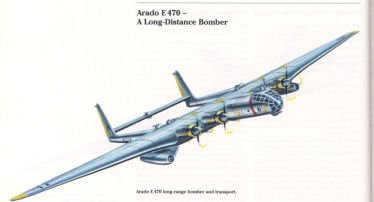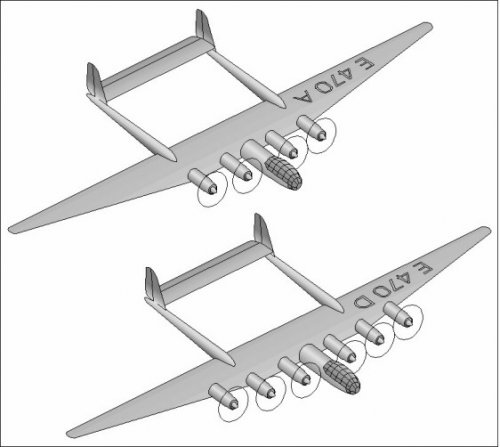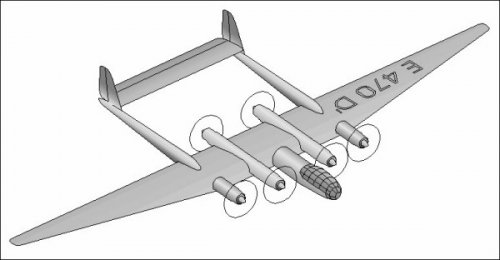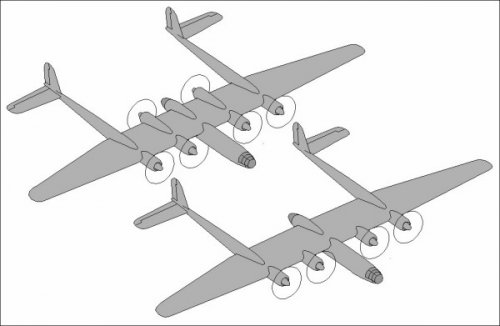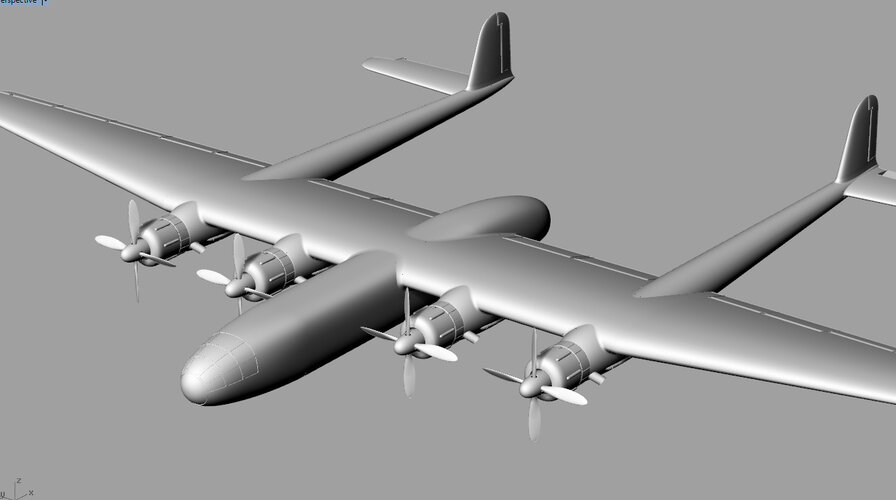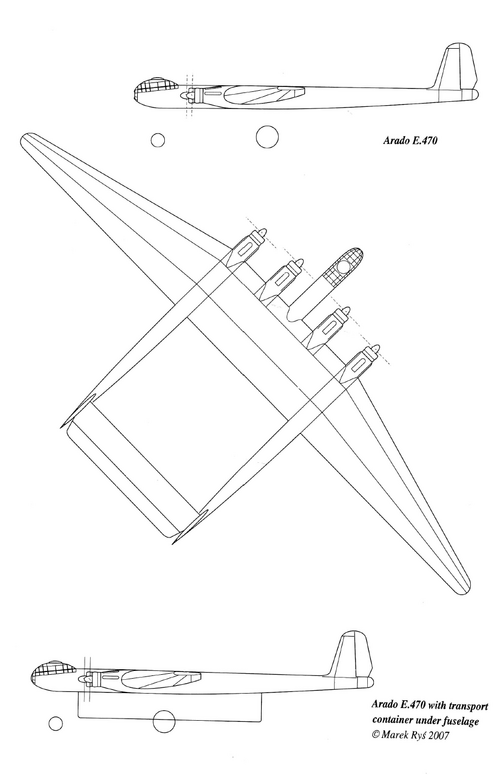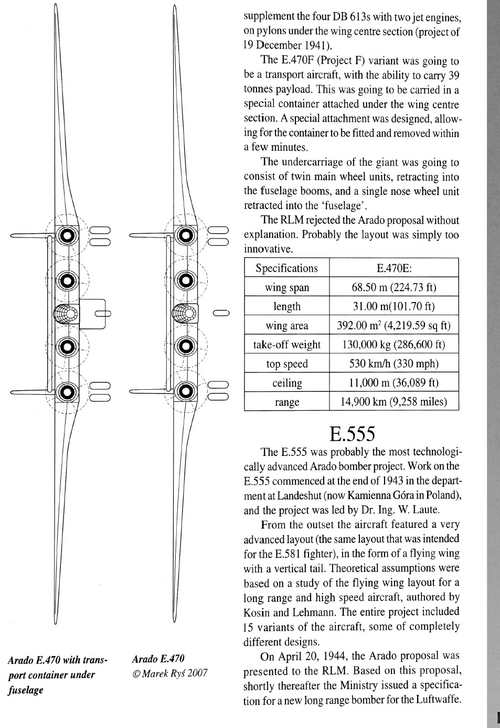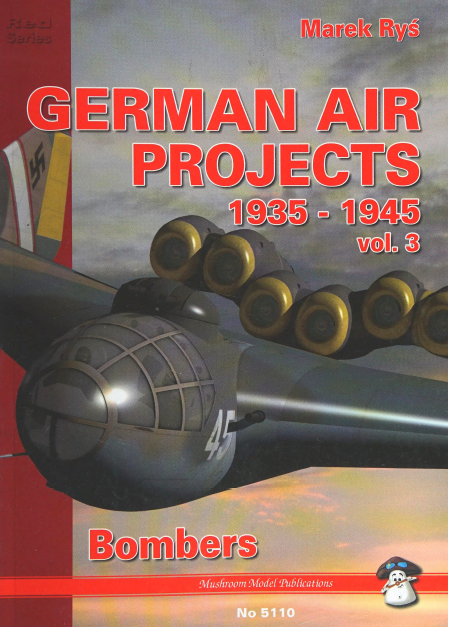Thank you my dear Dan,
but Mr. Manfred Griehl said that there was a variant F,it was for transport
duty ?.
I was about to say that there were only five designs - A, B, C, D and E. But looking more closely at the report conclusion, it says:
"Analysis of an aircraft design with supplementary cargo space
Appendix 41 illustrates an alternative design with supplementary cargo space. As already mentioned, this design is less favourable in FWS value and weight, than Design "E" in the transport aircraft variant. The layout of the cargo space, however, is probably simpler. As a long-range bomber without cargo space, it is aerodynamically somewhat cleaner than Design "E". A just appreciation of the pros and cons of the two arrangements is, however, only possible by a detailed analysis, which was outside the scope of the present work.
To conclude, it may be said that the combination of a transport aircraft for large, centrally-carried loads over distances of average length, with a long-range bomber layout, is quite practicable."
So both Design E and the unnamed 'alternative design' can represent either bombers or transports. There is absolutely no reference anywhere in the report to the 'alternative design' being called 'Design F'. I would guess that Griehl called it that for the sake of convenience.
Only Design E and the alternative design appearing in drawings, the numbers of which are 'SKE 470-02' (for the alternative design) and 'SKE 470-03' for Design E. Perhaps there was an SKE 470-01 but it's not included in the report and it seems highly unlikely that we will ever see it.

